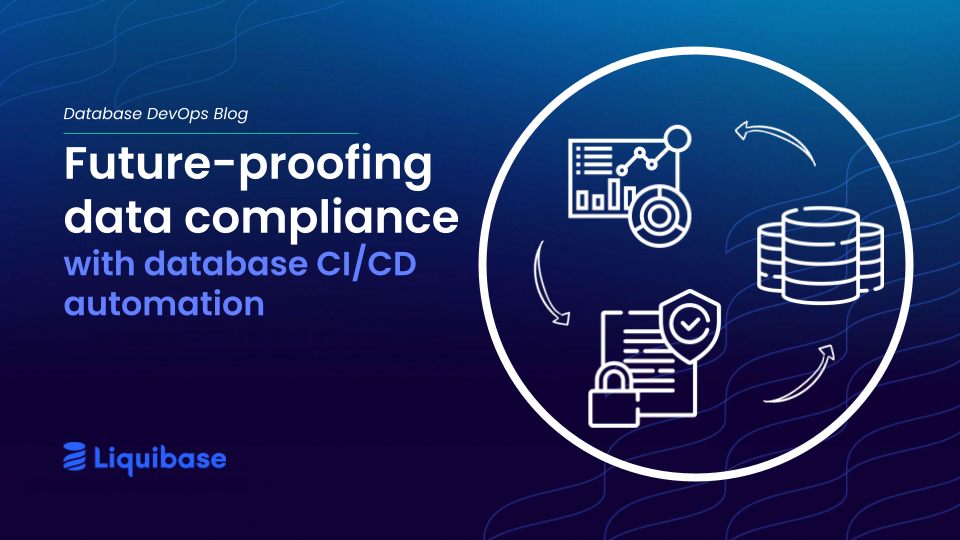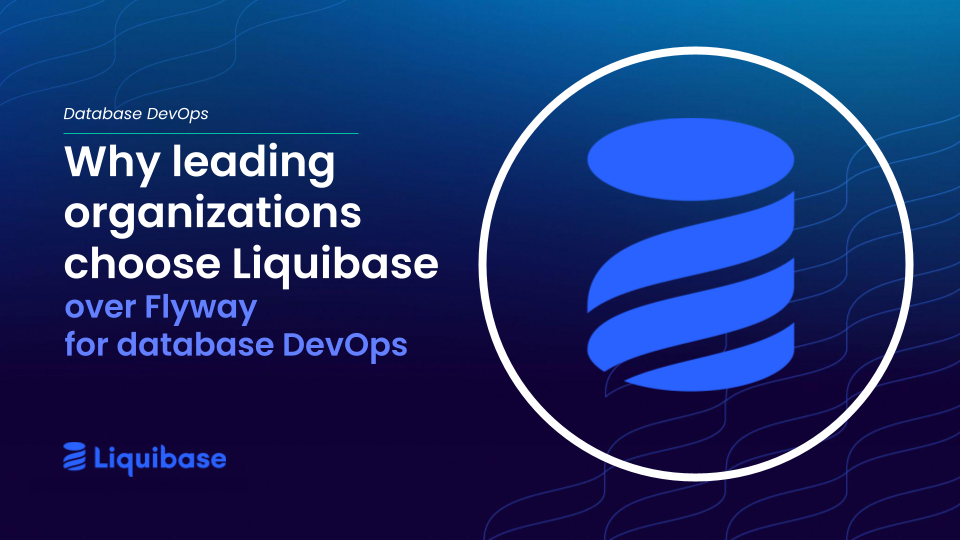April 9, 2024
Future-proofing your data compliance strategy with database CI/CD automation

Your organization’s data compliance framework isn’t complete without database CI/CD automation.
Compliance might not be the most exciting topic at the leadership table, but it’s sure to take center stage more often as innovations to digital experiences and data collection continue to accelerate. Application teams are releasing more often, with every new feature directly impacting revenue, profitability, customer loyalty, and market positioning.
These accelerated release cycles also introduce more changes to the database, which increases the opportunities to violate ever-expanding compliance statutes governing data collection, use, and privacy.
Modern IT teams have embraced DevOps culture to integrate coding and deployment for safer, speedier releases with compliance controls in place to avoid costly errors. Continuous integration and continuous deployment (CI/CD) application pipelines keep pace with compliance regulations by applying necessary updates to automated workflows, ensuring consistent coverage. They can update the pipeline’s processes and controls to meet a new compliance requirement just as fast as they can produce flashy new capabilities.
But the database is left behind.
Even when it requires structural (schema) updates with nearly every application release, it’s typically stuck in a manual database change management (DCM) approach. Not only does this clunky, misaligned workflow slow down standard patches and major innovations, but it also grinds to a halt when compliance requirements change.
Reviewing and testing change requests against database compliance policies is a bottleneck and a weak spot in your organization’s otherwise cutting-edge data and IT compliance framework. Whether that’s exposing the organization to major penalties or chipping away at the speed of innovation due to a “slow leak over the long term” impact on efficiency and productivity, it holds the organization back from its true potential.

Database change stands in the way
Application teams are pushing out updates at an unprecedented pace thanks to DevOps-minded optimizations and automated CI/CD pipelines that enable speed without compromising safety or compliance. This streamlined process directly influences an organization's agility, revenue, and competitive edge.
Yet the complementary database update process that’s manual and time-consuming slows down innovation. It also poses significant compliance risks, as manual oversight increases the likelihood of errors, potentially leading to data breaches and regulatory penalties.
Databases are crucial repositories of information, often sensitive information subject to strict compliance guidelines. With the pressure to keep pace with rapid releases coming from application teams and pressure from compliance experts to be careful and methodical, teams managing database changes are stuck in a tricky, frustrating, and suboptimally productive scenario.
How can database teams reconcile stringent – and constantly evolving – regulations, an immense flow of data, and the demands of a high-achieving application team while safeguarding data in a manner that’s efficient and sufficient?
Bridge the gap: integrate and automate DCM
The answer’s already present – the automated CI/CD pipeline exists to manage this sort of thing. If only the application-focused CI/CD pipeline could be extended to include the database change management workflow. When database change is treated like application code with version control, automated testing, built-in governance, and workflow observability, organizations can ensure that their data stores evolve at the same pace as their applications.
When you remove the opportunity for human error and instead rely on methodical, standardized, automated review, validation, and testing for database changes, teams can ensure they’re consistently in line with necessary compliance standards (along with the rest of the organization’s rules and policies). This approach significantly strengthens an organization's overall compliance posture by providing a detailed audit trail of every change.
Integration and automation enhance collaboration across development, operations, and database teams, too, fostering a culture where compliance and efficiency are jointly prioritized and considered as part of the pipeline, not an afterthought. The resulting framework can swiftly adapt to new compliance mandates and market demands without sacrificing speed or innovation.
Markets can and will change. Your organization’s ability to pivot and react to competition, regulations, economic disruptions, and security threats hinges on how quickly and reliably its data stores can keep up with evolving compliance requirements and challenges. This is not to mention the new, different, and more abundant data that flows from artificial intelligence (AI), the Internet of Things (IoT), and other data-heavy advancements – and the future compliance doctrines that will help keep them under control.
Excluding database change management from your comprehensive compliance strategy or the expertly orchestrated CI/CD pipeline can limit the agility and efficiency promised by DevOps methodologies. Database compliance automation, as an integrated database DevOps solution, accelerates the pace of delivering compliant new features and services that drive revenue, maintain customer loyalty, and enforce your market lead.
The DevOps approach to automating database compliance
For good reason, your business has made countless investments in compliance protections and DevOps culture to pursue the technological future at top speed, safely. Extending those fast and continuously improving processes to database changes means teams can implement, monitor, and adjust underlying data infrastructure as efficiently as possible, bringing application and data practices to new heights (safely within the bounds of compliance).
The DevOps framework that empowers your organization to innovate and release quickly, maintain a competitive edge, and remain compliant must integrate database CI/CD automation to avoid slowdowns, risk, and compliance-related penalties. That automation must also come with solutions for governance and observability for a complete database DevOps approach that keeps pace without degrading reliability or introducing security risks.
Automation with control and visibility
Database change management automation with governance and observability capabilities is crucial for keeping data infrastructure compliant with the latest regulations and supporting applications' needs without decelerating the pipeline. When creating automated pipelines connected to sensitive data, the risk associated with that data gets amplified as it is integrated, leading to even greater potential consequences.
Implementing controls that standardize database changes and scour them for compliance risks helps teams move quickly without cutting corners or adding unexpected problems later on. Those teams also need a way to measure, track, and continuously improve the pipeline so it doesn’t veer off course or cause new headaches. Database change pipeline analytics and change operation monitoring can tap the automated workflow’s metadata for DevOps metrics and in-depth activity reports to find root causes, remediate issues, identify patterns, and support audits.
By uniting database, application, and DevOps teams around database updates, the entire data-driven ecosystem operates more harmoniously, ensuring compliance alongside peak productivity.
To find out how to extend DevOps to the database and complete your IT compliance framework, get the whitepaper, Streamlining database compliance with CI/CD automation. You’ll learn:
- The challenges preventing efficient, automated database compliance
- What’s at risk if you neglect compliance automation in the database
- How to enable automation – and a proactive approach to database compliance that’s seamlessly integrated into the CI/CD pipeline

.svg)
.svg)








